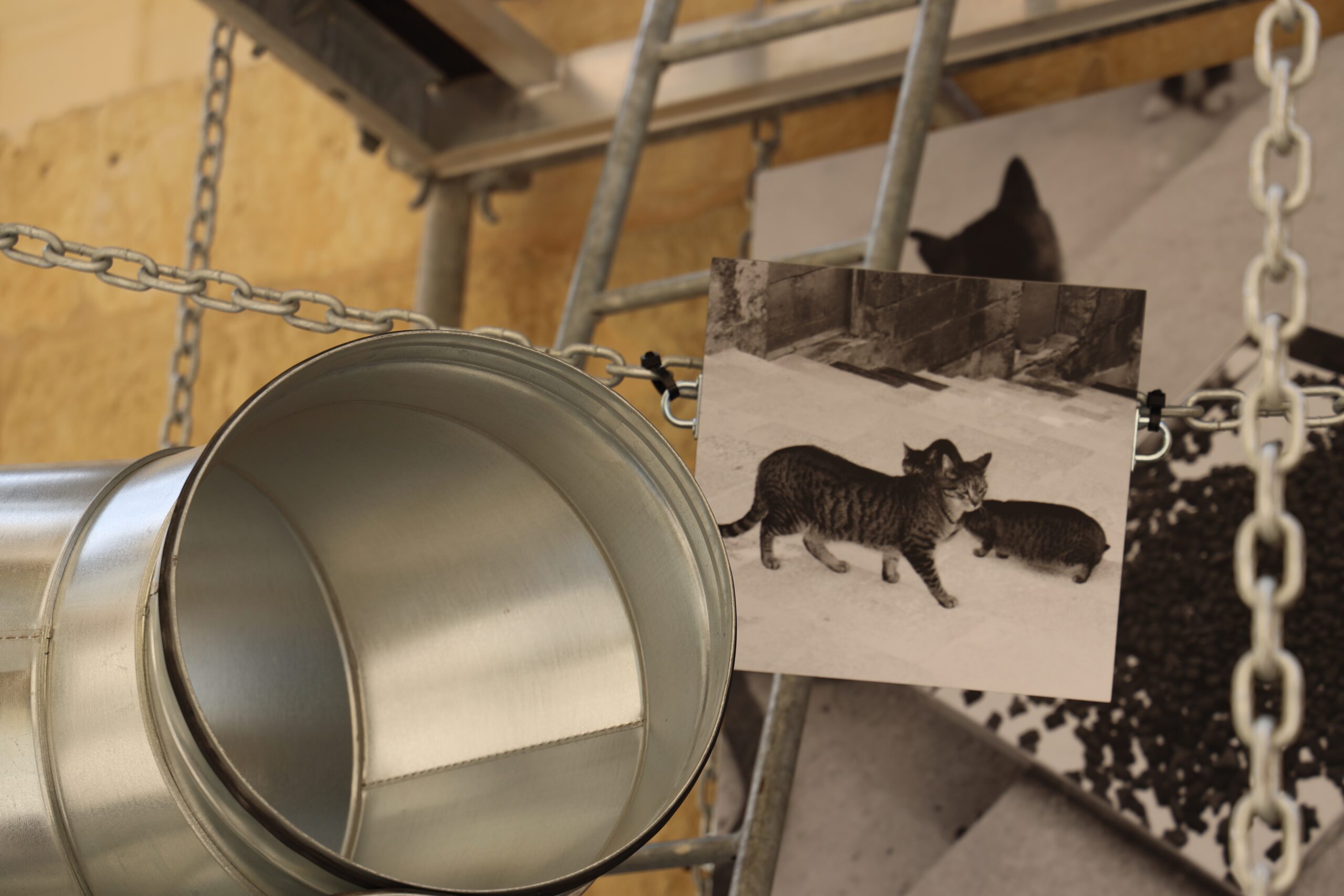Laura Besançon’s photographic and sculptural intervention ‘Infrastructures of Care’ contemplates exchange between humans, man-made structures, non-human communities and surrounding landscapes. Drawing upon aspects related to development, care and co-existence, this work focuses mainly on the cats that live in St Charles Street and the Biċċerija area, in the context of the Old Abattoir – the current Valletta Design Custer – and in the context of the building the ex-slaughterhouse.
“It was very interesting to see how these communities maneuver through architectural space,” Laura Besançon says. “I decided to re-appropriate human materials – building materials, human structures, and objects such as the ‘turtiera’ (the tray that was used in ovens) – for the use of the non-human communities to suggest a kind of symbiosis and co-existence between both kinds of communities, both human and non-human”.
Besançon is becoming increasingly interested in producing public artworks as she feels it becomes part of our everyday life fabric.
This intervention reflects on one of the nine curatorial themes of fuse, Symbiosis which deals with the change in urban life. The significant developments caused by the regeneration of any area inflict changes to structures, demographics and use of space. This is also evident in the neighbourhood, where the transformation of many prominent buildings such as the Biċċerija itself entailed shifts in population densities, changes to the urban fabric and a transition to more diversified use of space.
Curated by Elyse Tonna, fuse is a collaborative visual arts and research project which explores and uncovers aspects of the intangible history and the intangible stories of the area.
